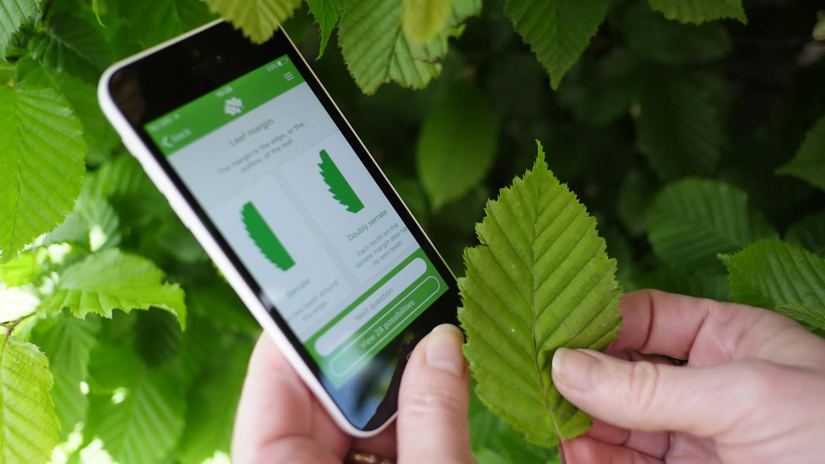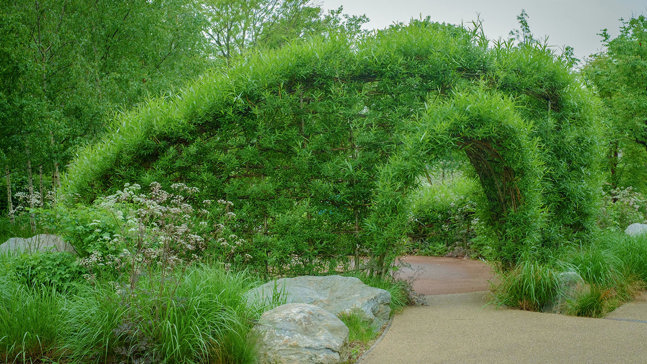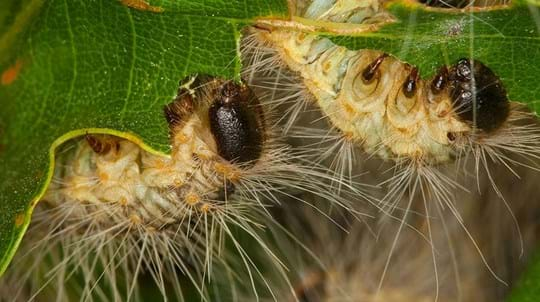
Credit: Florapix / Alamy Stock Photo
Leaves
The leaves are very long and thin (20cm by 1cm), glossy and dark green with a felt-like covering of silvery hairs beneath.
Strong, neat and bendy, osier willow is the best of the best for basket weaving. It’s not only a source of food and shelter for native wildlife, it can even decontaminate soils it is planted on!
Common names: osier, common osier, basket willow
Scientific name: Salix viminalis
Family: Salicaceae
Origin: non-native
Common osier is a deciduous broadleaf tree. Mature trees grow to 7m. The bark is greyish-brown with vertical cracks. Twigs are smooth and yellow-green.
Look out for: the edges of the very narrow leaves which often appear to be rolled inwards. Catkins appear before the leaves.
Identified in winter by: the green, sparsely hairy, narrow buds which are pressed close to the twig.

Credit: Florapix / Alamy Stock Photo
The leaves are very long and thin (20cm by 1cm), glossy and dark green with a felt-like covering of silvery hairs beneath.

Credit: Nature Photographers Ltd / WTML
The osier is dioecious, meaning male and female flowers are found on separate plants. Its flowers are greenish catkins which appear in late winter to early spring before the leaves. Male catkins are yellow.

Credit: Nick Upton / naturepl.com
Once pollinated, the greenish female catkins develop fruit capsules, which split open when mature to release tiny seeds.
Other willow species which all freely hybridise.

Download our free Tree ID app for Android and iPhone to identify the UK's native and non-native trees. It's an A-Z tree guide in your pocket.
Download the appCommon osier is native to Europe and western Asia and thought to have been introduced to the UK in ancient times. It is often found growing in wet or damp areas, such as near rivers and streams.
Caterpillars of a number of moth species feed on the foliage, including the lackey, herald and red-tipped clearwing. The catkins provide an important source of early nectar and pollen for bees and other insects, and the branches make good nesting and roosting sites for birds.
There is a local custom in Chediston, Suffolk, known as a 'willow stripping' ceremony. On the night of the full moon in May, a person is dressed in willow strippings, dances around and is then thrown into the local pond.

Credit: Katharine Rose / Alamy Stock Photo
Osier withies (strong, flexible willow stems) are traditionally used for basket making and weaving, and are popular for willow screens and sculptures. Osier, like all willows, is also grown for its ability to absorb heavy metals, and is often planted to 'clean up' contaminated waste ground.

Helen Keating • 05 Dec 2022
Transform your home into a woodland wonderland this Christmas with our easy ideas for festive, foraged home decor.
Be inspiredOsier may be susceptible to watermark disease caused by the bacterium Brenneria salicis. Over time, this leads to affected branches dying back and red leaves developing in the crown. If left untreated, the tree can die.
More than 60 different kinds of osier hybrids and cultivated varieties are grown in Britain for the basket-making industry.

Shop
We have single trees and tree packs to meet your needs, from wildlife to woodfuel. Delivery is free.
External link

Trees woods and wildlife
Learn more about the pests and diseases threatening our trees. Find out how to spot them, the symptoms and outlook, and how you can help.